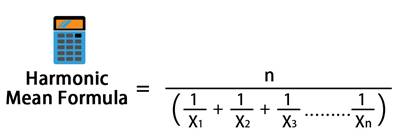Elasticity Meaning
Elasticity is a count of a variable's responsiveness to adapt to another variable. Most typically, this sensitivity is measured by the change in the quantity requested in relation to changes in other parameters, such as price. It's mostly used to figure out how much a change in a product's or service's pricing changes customer demand.

Elasticity is a term used in context with Economics or business to describe the fluctuation in the combined quantity demanded of a good or service in response to price fluctuation in that good or service. A product is considered elastic if its quantity demand changes more than proportionally when its price rises or falls. In contrast, a product is considered inelastic if the quantity demanded for it is low.
Different Types of Elasticity
There are four types of elasticity in the context of demand, supply, price and other influencing factors. These are as follow:
1. Elasticity of Demand
The elasticity of demand is a term used to determine the quantity demanded of a good or service. It is determined by varied factors like Income, price of goods or services, preference of the individual, substitute product and so on. Fluctuation in any of the variables results in a change in quantity demand. Price elasticity of demand is a term used to determine the quantity demanded of a good or service in respect to fluctuation in the price of the product or service. Normally, the quantity demanded is inversely proportional to price, except in the case of inferior products and luxury products.
2. Income Elasticity
Income elasticity of demand refers to the responsiveness of the demand of quantity for specific goods to a change in the Real Income of consumers who buy that good while all other factors remain constant. To calculate income elasticity, you can divide the percent change in quantity demanded by the percent change in income. You can use the income elasticity of demand to determine whether a particular good is in demand.
3. Cross Elasticity
The cross elasticity of demand is a term used to determine the quantity demanded of products when the price of its substitute or complement product changes. For example - bread and butter - these products are complementary. The quantity demanded of butter is affected by the price of bread. If the price of bread is high, then the demand for butter will be low and vice-versa. This is regarded as cross elasticity.
It can be calculated as:
%change in quantity demanded of one good / %change in the price of another good.
Talk to our investment specialist
4. Price Elasticity of Supply
The fluctuation in demand for goods or services in respect to Market price is measured by the price elasticity of supply. When the price of good rises, the supply of that good increases, according to basic economic theory. The fall in price in goods/services leads to a fall in supply as well.
Advantage of Varied Elasticity
When marketing a product, a few points need to be taken care of to thrive in the competition and reap profits. Here are the plus points of varied elasticity you must know:
Price Elasticity
The key component for increase or decrease in sales of a product depends on one of the important factors is the elasticity of price. The response of consumers towards an increase or decrease in the price is dependent on their relationship with the products. The manufacturer would be able to understand the relation of its product with its consumers.
Elasticity of Demand
Products and services are brought by consumers as per quality and price. The consumer's demand does change with the prices. The seller needs to be updated with the market value of their product and services, and they can take the help of consumers as well. After getting the demand for their products and services, they can check if their consumers are ready to pay more or if they are ready to change the brand. Through this, they can understand their market reputation and demand.
Disadvantage of Varied Elasticity
Let’s dive into the negative aspect of varied elasticity as the competition against a product is always fierce.
Price Elasticity
For consumers, the price matters as much as the product and its quality matters. This means a consumer can move towards competitors' products if they find an increase in the product without increment in the quality or quantity. The producer of products should keep in mind their competitors and the service they are providing in the same amount.
Elasticity of Demand
The disadvantage includes that every time the producer thinks to change the price, they need to go through the entire process again. So, the producer has to spend money on the entire process again.
The Bottom Line
Elasticity is a significant calculative measure for the sellers of goods and services. It is important because it conveys how much a product's demand increases or decreases according to the changes in the market and its price. The change of its market share depends upon the product's quality, its relation with the consumer, and its competitor's products.
All efforts have been made to ensure the information provided here is accurate. However, no guarantees are made regarding correctness of data. Please verify with scheme information document before making any investment.












